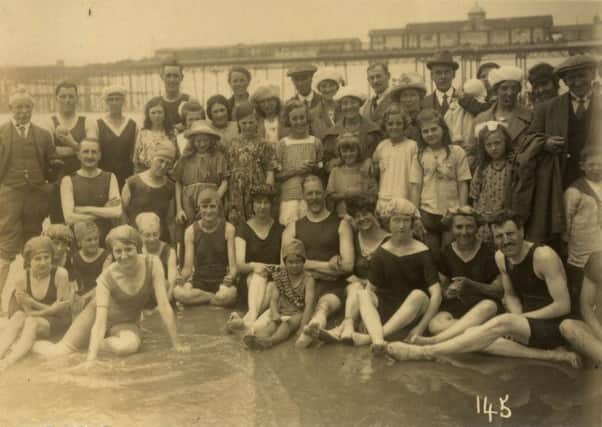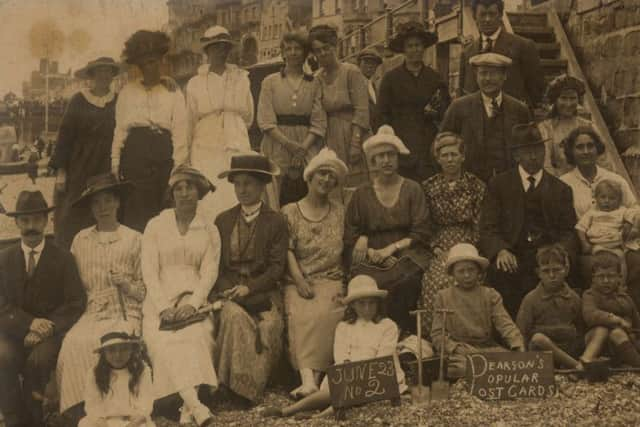Crash bang wallop - what a picture!


He writes: The early years of the 20th Century, at least in Hastings, were the heyday of the ‘beach photographer’ and innumerable examples of beach photographs are know to exist, many of them well-handled but not posted.
Who were they, those people in the fading photographs? They may have been ‘day-trippers’ arriving by train to the nearby Hastings Station or, later, in the 1920’s in charabancs.
Advertisement
Hide AdAdvertisement
Hide AdHad the fashion for photographing small posed crowds on the beach not died a natural death in the 1930’s the war would have finished it off anyway because seaside visits were actively discouraged.


It is of course possible that the photographer would simply gather together an unrelated crowd of people, photograph them, and then offer the resulting postcards for sale to anyone who was interested. The content of the photographs is always interesting, literally a ‘snapshot’ of clothing fashion and style at the time and the backgrounds show just how close the beach was to the front-line buildings before Sidney Little built his promenades in the 1930’s.
Bathing costume style illustrates the evolution from segregated bathing and male nudity contrasting with complete female cover up in Victorian times to torso-covering knitted ‘bathing suits’ for both sexes up to the 1930’s, swimwear which defenders of public morality noted ‘clung lewdly to the female form’. By the inter-war period bathing machines had disappeared from the scene.
Beach photographers usually identified the individual photographs for their own administration by including small placards or blackboards within the pictures advertising themselves and including some sort of reference.
Advertisement
Hide AdAdvertisement
Hide AdThe images were finally released as postcard-sized photographic paper that included a ‘postcard back’ already printed. The photos had to be ready for collection by the subjects within a short time of the pictures being taken –Willmett and Allworks, whose activities appear to have been confined to 1919, and were possibly connected with W J Wilmett operating from 14 Pelham Crescent from 1910, tell us that the post cards would be ‘on sale the following day’ and the same was probably true for A M Breach, (from the Old Town fishing family of the same surname), who traded from various addresses in White Rock between 1897 and 1922 and his ‘pitch’ seems to have been where the promenade ‘stepped out’ for the White Rock Baths and was later built over by Sidney Little with his seafront extensions of the 1930’s.